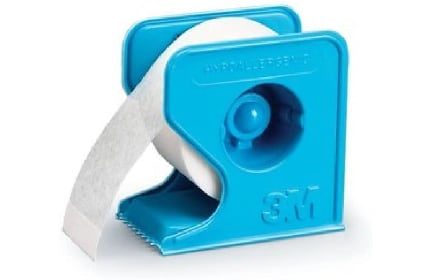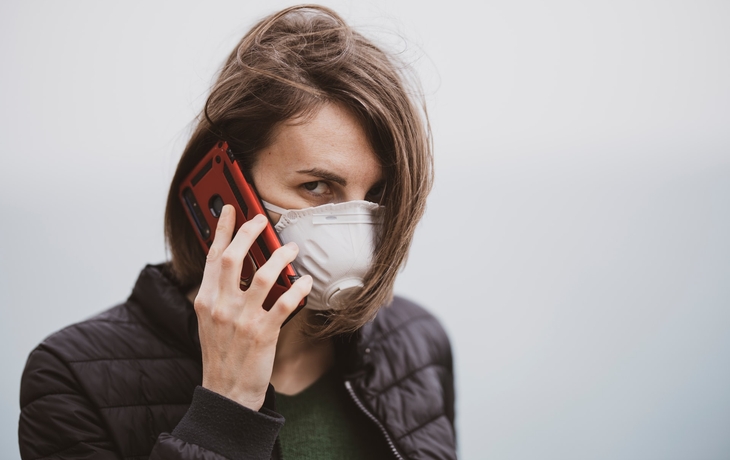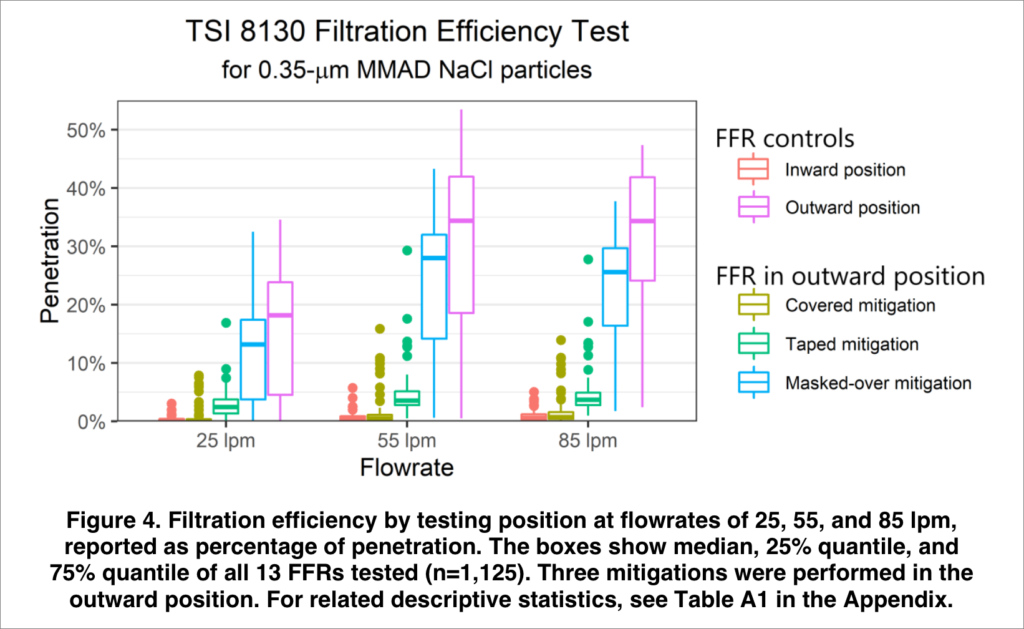The ever-shifting official recommendations about masks over the past year have been frustrating because it seems that science takes a back seat to politics and incompetence.
The Prepared said way back in January 2020 that you should get masks for COVID because it was simple science that respirators/masks will protect you and others against respiratory viruses.
But officials first said masks don’t work. That was misleading at best and obviously, the advice changed. Then masks became mandatory. Now we’re being told that we may even need to wear double masks to combat more infectious new COVID variants.
More: Do you need to do anything different because of the new COVID mutations?
Along the way, people came to correctly understand that, in this situation, masks were more about preventing you from spreading virus outward rather than blocking what’s coming into your body.
So while articles like our pre-covid respirator review recommended products with exhalation valves — which greatly increase the comfort of wearing a respirator without sacrificing your protection — people were right to ask “Does the exhale valve defeat the purpose because I’m potentially spreading COVID outward while wearing it?”
Not only have valved-mask wearers been subject to public shame and places like WebMD told us to stay away from them, but such masks have also been banned in some jurisdictions, on airlines, and even in the Apple Store. So this blog and others showed people how to modify/block exhale valves to err on the side of public safety and to comply with those rules.
Good news: A recent study by the Centers for Disease Control (CDC) and the National Institute for Occupational Safety and Health (NIOSH) found that valved masks actually do block the outward spread of the virus, and may in fact be better at slowing the spread of COVID-19 than simple cloth or even surgical masks.
Here’s what you need to know:
- Current CDC recommendations caution against valved masks, leading to bans in many places
- The CDC/NIOSH study shows valved respirators caught nearly half of the particles you breathe out, making them equal to or better than the masks most people wear
- Valved N95 respirators catch 95% or more of the particles you breath in, giving you vastly better protection than a cloth or surgical mask
- You can seal the inside of the valve with materials like an electrode pad used to perform electrocardiograms to hold in 95% of your exhaled particles
- Or you can tape over the outside of the valve, and so on
- Until the recommendations change, a valved mask might get you in trouble — but at least you have the science on your side
Why health authorities are against mask valves
Exhalation valves fix many of the common complaints about mask wearing. If you’re unfortunate enough to have to wear both glasses and a mask, you know how quickly you can be rendered blind by your own breath fogging up your glasses. A valve prevents that problem and also keeps you from rebreathing the same humid air over and over, making breathing much more comfortable.
The same reason why valves make masks more comfortable is also why health authorities recommended against them, under the theory that while your breathing intake may be well-filtered, you’re spewing out germ-laden air through the vent.
Current CDC recommendations state, “CDC does not recommend using masks with exhalation valves or vents because this type of mask may not prevent you from spreading COVID-19 to others. The hole in the material may allow your respiratory droplets to escape and reach others.” In its recommendations to healthcare providers, the CDC says:
However, respirators with exhalation valves should not be used in situations where a sterile field must be maintained (e.g., during an invasive procedure in an operating or procedure room) because the exhalation valve may allow unfiltered exhaled air to escape into the sterile field. If you only have a respirator with an exhalation valve available, cover the exhalation valve with a facemask (surgical or procedure mask) that does not interfere with the respirator fit.
Sealed N95 (or similar P100 etc.) respirators are the crème de la crème, especially if you work in a sterile environment, but this new study seemingly contradicts existing CDC guidelines.
What the science actually says about valves
The December 2020 NIOSH/CDC study may turn the existing recommendations on their head. If you’re interested in this topic, I highly recommend that you read the entire thing, because it’s fairly short and largely written in plain English (what little jargon is used is defined up front).
You don’t have to read far to find the conclusions. On page 2 of the study, it reads:
FFRs with an exhalation valve provide respiratory protection to the wearer and—according to the findings from this study—can also reduce particle emissions to levels similar to or better than those provided by surgical masks and unregulated barrier face coverings.
FFR is short for “filtering facepiece respirator.” In other words, a respirator with a valve reduces the number of droplets you spew as well as or better than a surgical or cloth mask.
The conclusions on page 16 restate this even more strongly: “Even without mitigation, FFRs with exhalation valves can reduce 0.35-μmMMAD particle emissions more consistently than surgical masks, procedure masks, cloth face coverings, or fabric from cotton t-shirts…”
In plain English again: valved respirators do a better job of slowing the spread of COVID-19 than most of the masks people wear, even without modifications like taping the valve or putting another mask over the respirator.
How effective are valved masks at stopping the particles you breathe out? The authors define that as “penetration,” and in the study, “penetration” in valved masks ranged anywhere from less than one percent, up to 55%. That’s compared to penetration results from “procedure masks” that range anywhere from one to 85%. In other words, even at their worst, valved respirators stop nearly half of the particles you breathe out.
NIOSH created a computer model in Blender to demonstrate the effect. The reason a valved mask works better at containing your spittle than a cloth or surgical mask is the seal it can achieve around your nose and mouth (assuming you are clean-shaven or apply petroleum jelly where the mask meets your face). Even the better cloth and surgical masks don’t seal in the juices so to speak, letting your expelled droplets blow out the sides of the mask.
So far, we’ve only discussed the benefits to others, but a respirator reduces the particles you breathe in to under five percent. The study notes that some surgical masks offer similar filtration to respirators, but do not seal the sides as respirators do. So not only does a valved mask offer those around you much better protection, it offers you vastly superior protection. And with some inexpensive modifications, valved respirators can be made even more effective.
Simple improvements for valved respirators
Can the valve be effectively sealed to further reduce particle emissions? The NIOSH study sought to test this as well, trying three different methods: sealing the inside of the valve with surgical tape, sealing the inside of the valve with an ECG pad, and stretching a surgical mask over the respirator. The tape and ECG pads were chosen due to their non-toxic nature, resistance to moisture, and availability in hospitals.
In NIOSH’s testing, the ECG pad provided the best seal, reducing penetration to under 5% (except for one tested respirator model), with the surgical tape being very close.

3M Red Dot ECG Pad

3M Micropore Surgical Tape
The results with stretching a mask over the respirator were all over the map due to different models tested, but were all far inferior, even though the masks were hot-glued in place to maximize the seal.
Why this matters (and why it doesn’t)
While this study needs to be peer-reviewed, it provides compelling evidence that the belief that vented respirators spread disease is a myth. And not only is it a myth, but vented respirators are equal to or better than the paltry cloth and surgical masks most Americans are wearing in public now.
Not only do vented respirators appear to provide superior protection for everyone, but they could also encourage more people to wear masks or wear them properly since they address many of the complaints about mask-wearing. Your glasses will not fog up while wearing a vented respirator and you won’t be rebreathing your expelled droplets and germs back in. Plus, they’re much more comfortable to wear.
The gold standard in COVID-19 protection is and has been sealed N95 (or better) respirators, and this study does not change that. However, we should not let the perfect be the enemy of the good, and anything that can get more people wearing masks is a good thing.
However, this knowledge can be a little dangerous. The places that have banned vented respirators are going to hold you to that, no matter what study you show the front-line workers. If you opt for a vented respirator, you may be shamed or harassed in public for “spreading germs” even if you’ve sealed the inside with ECG pads.
It’s going to be on the institutions to verify these results, change the recommendations, and ultimately change the policies and perceptions. Unfortunately, the wheels of bureaucracy turn slowly, and experts can be reluctant to admit they were wrong. But given the fact that the CDC specifically asked NIOSH to run these tests to check their own recommendations, I hope that they will be open to change.
We have contacted the CDC for comment, but have yet to hear back.



You are reporting the comment """ by on